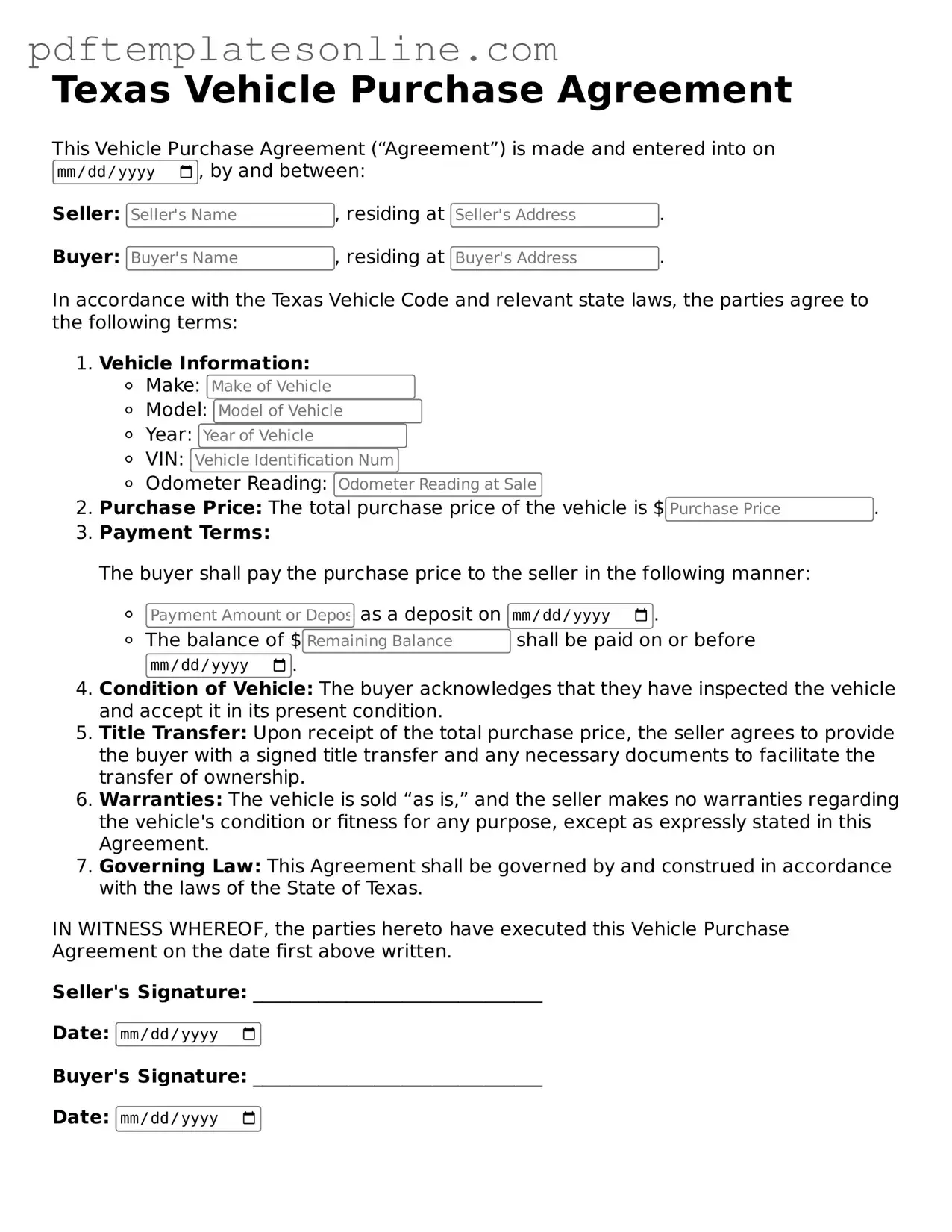When completing the Texas Vehicle Purchase Agreement form, individuals often overlook critical details that can lead to complications later. One common mistake is failing to provide accurate information about the vehicle. This includes not specifying the correct Vehicle Identification Number (VIN), which is essential for identifying the vehicle in question. Incorrect VINs can create issues with registration and ownership transfer.
Another frequent error involves the buyer's information. Some individuals neglect to include their full legal name or use nicknames instead. This can cause confusion and may lead to disputes over ownership. It is crucial to ensure that all personal details are accurate and match the identification documents.
In addition, people sometimes forget to indicate the purchase price clearly. Leaving this section blank or writing an ambiguous amount can lead to misunderstandings between the buyer and seller. Clarity in the financial terms is vital for a smooth transaction.
Many buyers also overlook the importance of signatures. Both parties must sign the agreement for it to be legally binding. Failing to obtain a signature from the seller can render the agreement invalid, leaving the buyer without legal recourse.
Another common mistake is not including the date of the transaction. This detail is essential for establishing when the agreement was made and can be important for warranty claims or disputes. Always ensure the date is clearly noted.
Buyers often neglect to review the terms and conditions of the agreement. Ignoring this step can lead to unexpected obligations or fees. It is advisable to read through the entire document thoroughly before signing.
Furthermore, people may forget to provide any necessary disclosures about the vehicle's condition. If the vehicle has been in an accident or has significant mechanical issues, these should be disclosed to avoid future legal problems.
Another mistake is not keeping a copy of the completed agreement. After signing, it is essential for both parties to retain a copy for their records. This can serve as proof of the transaction and help resolve any future disputes.
Lastly, individuals sometimes fail to consult legal advice when unsure about the terms of the agreement. Seeking guidance can help clarify any confusing aspects and ensure that all parties understand their rights and responsibilities. Taking this step can prevent costly mistakes and protect both the buyer and seller in the long run.
